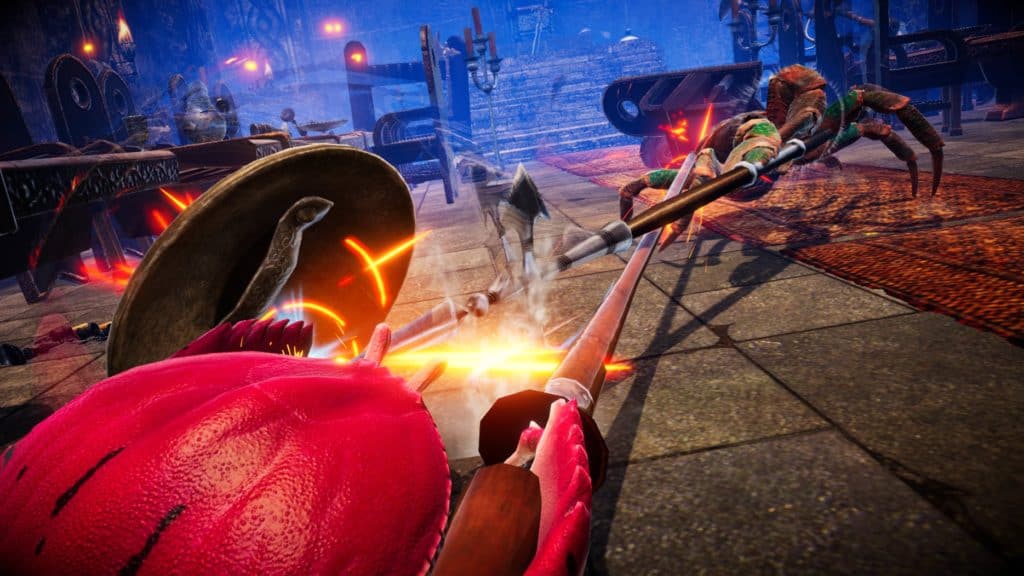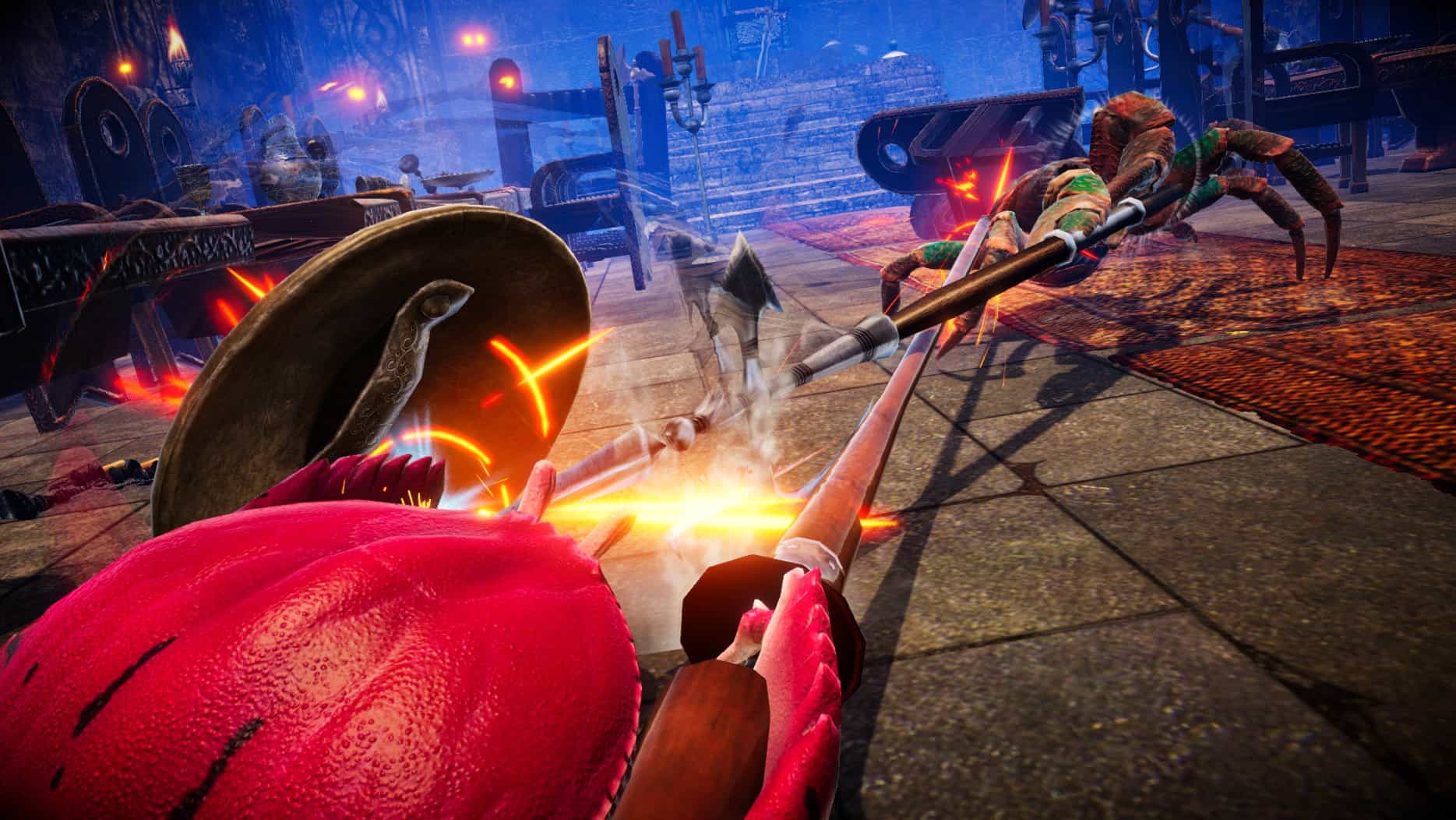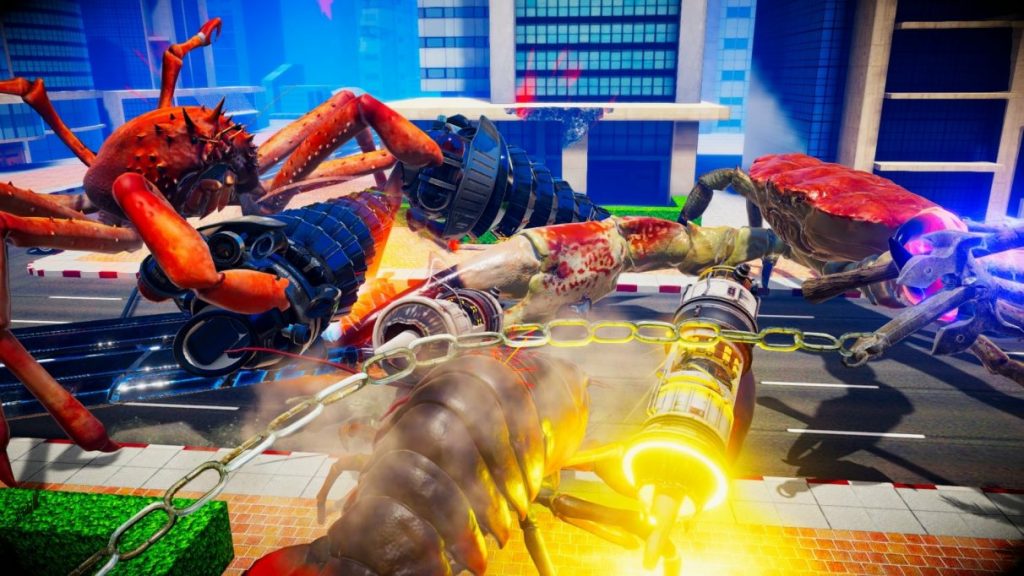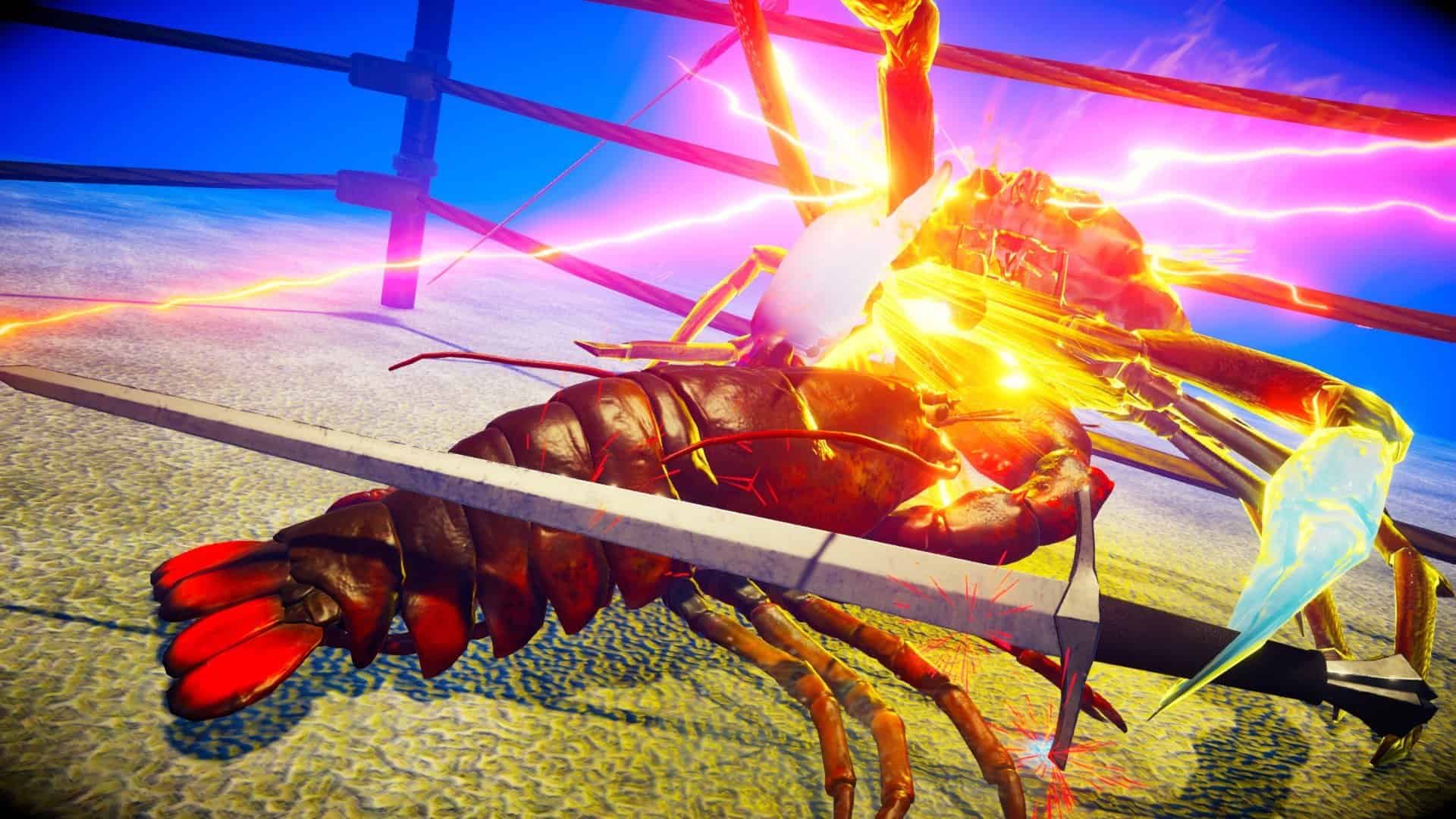You can trust VideoGamer. Our team of gaming experts spend hours testing and reviewing the latest games, to ensure you're reading the most comprehensive guide possible. Rest assured, all imagery and advice is unique and original. Check out how we test and review games here
Fight Crab is about fighting crabs. It is simple in its title and premise. It involves being dropped into a ring, as one of numerous species of decapod crustaceans of the infraorder Brachyura, and smacking the living daylights out of the other… crabs. Yet, like the gladiators of the Roman Empire, this is not some inconsequential spat. The combat is a spectacle, and one that may even rival the battles enacted thousands of years ago in the Coliseum.
Your chosen crab seeks glory in the campaign mode, and, in order to prove they’re not soft-shelled, they will come to blows in a variety of stages. There is the humble (yet classic) rock pool, where the crabs clamber over uneven terrain to get the upper claw. There is the medieval banquet hall, which, as the crabs clash, is destroyed—swords littering the stones. I really liked this one, because the creatures would drop into the ring by jumping down from the chandelier, and the final boss crab clattered clumsily down the steps from the throne. This display of aggression and panache is Fight Crab’s calling card. The stages are a spectacle, and sometimes nonsensical, like the misty street alleys of the ninja. I am certain that the audiences of Fight Crab’s fights will enjoy the destruction and calamity, but when you’re there, scuttling over forks and tablecloths, the setting melts away in the haze of war.
The types of gladiator in Fight Crab have their own strengths and weaknesses, just like their ancient counterparts. There are a range of crabs to play as, from the Long Arm Crab, to the Calappa, to the Dungeness Crab, who are rated differently depending on their area, weight, reach, acceleration, speed, turning stats. I chose the Christmas Red Crab, who is a solid all-rounder, but tough to knock over due to its weight. These crabs are unlocked through completing various stages, and are purchasable with winnings earned from the fights.
Weapons are on offer too, from the no-nonsense crowbar to the elegant shotel. Each of these are rated on area, weight, reach, sharpness, and swing; for example, the shotel has a greater reach than a crowbar, but both have equal swing, and the crowbar is a little heavier. The player’s crab also levels up over the course of the campaign, with individual strength, resistance, endurance, dexterity, and agility stats. These are upgradable by spending the same points, and this lets the player develop their very own crab warrior. The colour of the crab is also selectable, and I chose a blue-grey for a shadowy, intimidating appearance.
However, the controls for the crabs are where the barley will be sorted from the chaff (barley was a core part of Roman gladiators’ diets, as it was believed to be more nutritious than wheat). Each part of the creature is controlled independently. The game advises using a controller, so the triggers swing the arms forward fervently. The crab scuttles directionally by clicking the D-Pad, and clicking the D-Pad twice in a given direction will tell it to sprint. The shoulder buttons close the claw, enabling the crab to grab and pull on their opponent. Clicking both shoulder buttons simultaneously will block an incoming attack, and swivelling the sticks lets the player orient themselves for another stab at it. The stamina of the crab is a balancing act while in skirmishes, as the crab will drop weapons once their arm stamina runs out, but bashing the opponent with your crowbar over and over, in an effort to flip them, is extremely tempting.
Dealing damage increases the crab’s damage value, like in Super Smash Bros, and the higher the percentage is the easier it will be to flip the crab onto their back. Unleashing the crab’s Hyper Mode—a superpowered state activated at various points in the battle—unlocks special abilities, like a directional stream of power that knocks back enemies (just like that scene in JoJo’s Bizarre Adventure. You know the one.) When knocked down, the crab has three seconds to recover. If it can’t clamber back onto its legs, the fight is over. Yet, with the intricate control of a crustacean’s many many limbs in my hands, I couldn’t help but feel like the fights were determined by the gods rolling dice.
Often the clumsy swing of claws and swords caused the creatures to stick together, tussling helplessly until they collided with an environmental asset. Any Ancient Roman would be able to tell you that this doesn’t make for good telly. These moments might have been allayed if I was playing against another person, and not an AI who only has a specific strategy to follow. Heck, I’m not sure I had my own specific strategy either, as it felt like my crab choice and weapon choices were negated by being in the right place at the right time. Don’t get me wrong; it’s grand to whack crabs into the air and use special powers to go all glowy. When you’ve done it once, though, the ridiculousness rusts away in favour of progression.
At the beginning of this, I said that these clashing crustaceans create a spectacle that might be equivalent to that of the ancient Roman gladiators. Spectacle is defined as “a visually striking performance or display.” There are good spectacles, and there are bad spectacles. Here, in Fight Crab, I can’t help but feel like the games will have their glory–and what glory it shall be!–but struggle in delivering strategy and depth.










